The Nashville Predators are one of the best teams in the league and have already clinched a playoff berth. They have a three-point lead in both the Central Division and the race for the Presidents’ Trophy. After the games on Apr. 4, they rank seventh in goals scored with 259 and third in goals allowed with 206.
They have a Vezina Trophy contender in Pekka Rinne, the best defense in the league, and balanced scoring across all four lines. All signs point to the Predators being a favorite to return to the Stanley Cup Final except one area, their power play.
Slumping with the Extra Man
The Predators rank 18th on the man advantage, converting on 20.22 percent of chances. Their 267 power play opportunities are tied for third-most in the league. Both of these numbers have changed significantly from earlier this season. On Jan. 28, the Predators converted on 23.81 percent of chances, third-best in the league. At that point, they had played 47 games and had received 168 power plays, tied for seventh-most.
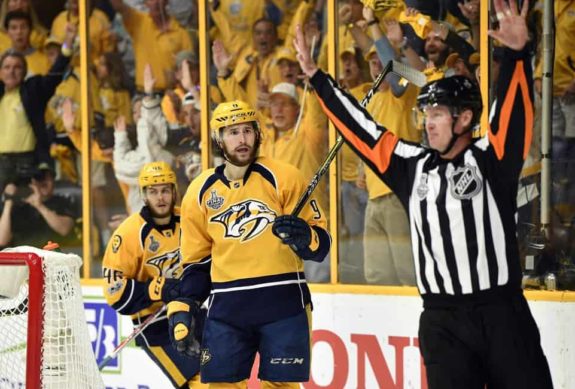
From the season’s start through Jan. 28, the Predators earned 3.57 power plays per game, but during the stretch from Jan. 28 through Apr. 5, they received just three per game. So, even with fewer opportunities, their power play has regressed by a wide margin since, highlighting just how cold they have been. But, what is behind this slump?
In the 99 power play opportunities they received from Jan. 28 through Apr. 4, they converted on 14.14 percent of chances, scoring 14 goals. During that span, they had six and seven game streaks in which they failed to score a power-play goal. Prior to Jan. 28, they never went more than three games without a power-play tally. Furthermore, they have not scored multiple goals on the man advantage since Feb. 19 against the Ottawa Senators, when they had five chances. By comparison, they had 10 multi-power play goal games from Oct. 5 until Dec. 14.
For the season, the Predators have shot 14.3 percent on the man advantage, tied for ninth in the league. Since Jan. 28, their power play shooting percentage has dropped to 9.5 percent, tied for 27th with the Detroit Red Wings and St. Louis Blues. If they shot their season average of 14.3 percent instead of 9.5 percent, they would have scored an additional six goals based on the 139 power play shots they attempted during that span.
Issue Starts at the Blue Line
The Predators’ power play regression has occurred on both units and by nearly all 10 of their regulars on the man advantage. When comparing the spans of Oct. 5 to Jan. 28 and Jan. 28 through Apr. 4, all 10 of their power play regulars have regressed in points-per-60 minutes (P/60) of ice time on the man advantage. Filip Forsberg and Kyle Turris have both experienced the largest declines in production, each with a drop of more than five P/60 on the man advantage.
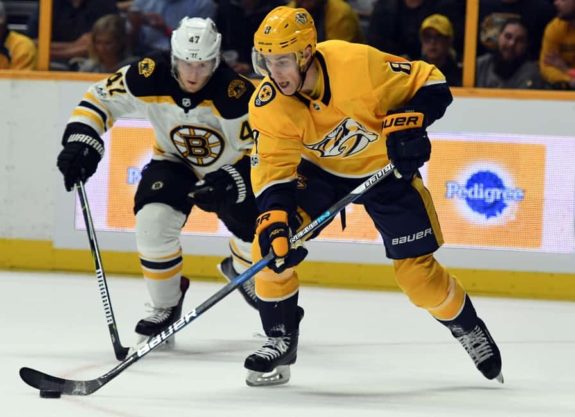
A major reason for the regression in P/60 is the steep dropoff in shooting percentage by individual players, led by defensemen Ryan Ellis and Mattias Ekholm. Both shot at least 16 percent worse on the power play after Jan. 28 compared to their shooting percentages prior. Of Nashville’s top 10 players by power play ice time per-game, just two players, Viktor Arvidsson and Kevin Fiala have improved their shooting percentages since Jan. 28.
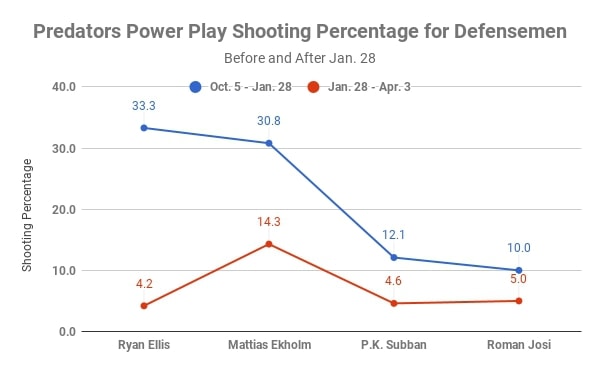
Although all players have been part of the team’s power play struggles, it is Nashville’s vaunted blue line that is most at fault. P.K. Subban, Ellis, and Ekholm have all had their power play P/60 drop by at least one point after Jan. 28. Ellis leads the group with a 3.45 point drop off, although he did only appear in nine games before Jan. 28.
The remaining defenseman, Roman Josi, is just below that mark, experiencing a .97 P/60 decline compared to his average before Jan. 28. When it comes to shooting percentage, Josi is also best among defensemen with a five percent regression.
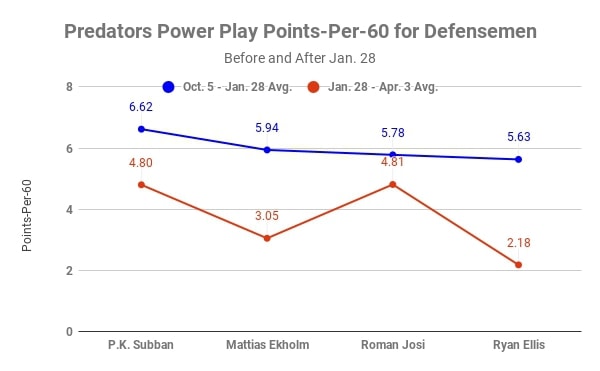
For Nashville’s blueliners, the regressions in production and shooting percentage have occurred alongside relative consistent shot rates. Subban attempted 2.22 more shots-per-60 (S/60) on the power play after Jan. 28 relative to his shot rate before that date. Ekholm increased his shot rate by 3.63 S/60 and Ellis attempted .54 more after Jan. 28. Josi, again, has been the outlier, attempting 6.18 fewer S/60 than he did before Jan. 28.
For Subban, Ekholm, and Ellis, it makes sense that there was a decline in shooting percentage that coincides with an increase in shot rate. It is common for an increase in shot volume to lead to a drop in shooting percentage. The regression in shooting percentage wouldn’t be an issue if they weren’t experiencing a simultaneous drop-off in P/60 as well. Their drops in shooting percentage led to a dropoff in goals-per-60 on the power play for all four defensemen. That is to be expected.
What is surprising is the comparable regressions they have experienced in assists-per-60 (A/60) on the man advantage. Subban and Ekholm have both regressed by at least .95 A/60. Josi and Ellis, however, have both increased this rate by at least .50 A/60. This is interesting because Josi and Ellis play on a power play unit together as do Subban and Ekholm and each defenseman’s impacts on the ice, positive or negative, directly impact his partner. That’s what we are seeing here.
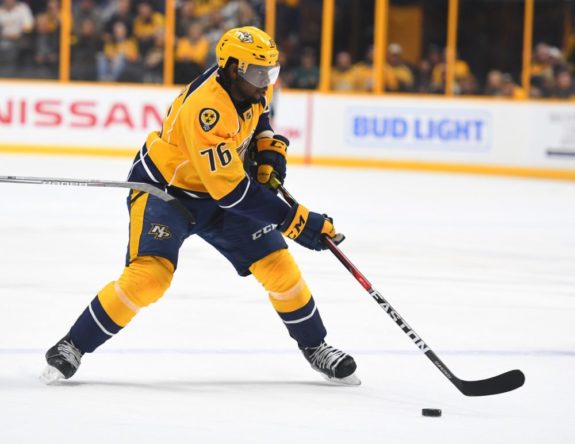
Now, the Predators defensemen are not solely responsible for the team’s struggles on the man advantage. If that were the case, the defense’s regression would generally be kept to goals-per-60. With the additional regression in A/60, it means their teammates on the power play are struggling to score, leading to a decline in assists for the blueliners.
Will Power Play Struggles Even Matter Come Playoff Time?
For a long time, there has been a widespread belief that referees “put away the whistle” when the playoffs start, that fewer penalties are called, and players can get away with more than they do in the regular season. That isn’t entirely true. There may be something to the idea that teams get away with more in the playoffs, but it is more likely the result of increased physicality than a change in officiating.
To determine if officials “put away the whistle” in the playoffs, I looked at the past 10 years and compared the number of power play opportunities (PPO) per game between the regular season and postseason. The result is that in only two postseasons, 2009 and 2015, were there fewer PPO per game compared to the regular season that preceded.
Instead, in eight of the past 10 postseasons, there was an increase of at least a tenth of a power play per game compared to the regular season. Per-game, this is a minor increase, but over the course of a postseason, the rise in PPO is substantial.
So, if the Predators are unable to correct their power play struggles, it may be a bigger deal than people think because power plays are a key component of the playoffs. However, there is good news for them if their regression isn’t halted. Only twice in the past 10 years have teams with a top-five power play in the regular season won the Stanley Cup, the 2017 Pittsburgh Penguins and 2008 Detroit Red Wings.
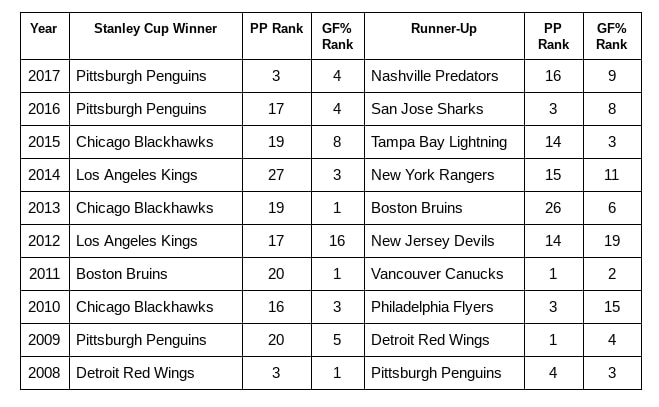
Additionally, only the 2008 Stanley Cup Final between the Red Wings and Penguins included two teams with a top-five power play. Only twice have the top-ranked power play reached the Final, the 2009 Red Wings and the 2011 Vancouver Canucks, both teams lost. In fact, only two of the past 10 Stanley Cups were won by the team with the higher-ranked power play, the 2017 Penguins and 2008 Red Wings. All but the 2008 Stanley Cup Final involved at least one team ranked 15th or worse on the man advantage and in the 2013 and 2014 Finals, both teams ranked as such.

A better predictor of playoff success is 5-on-5 play, particularly in the Goals For Percentage (GF%) category. Only once in the past 10 years has a team outside the top-10 in GF% won the Stanley Cup, the 2012 Los Angeles Kings. That Final was also the only occurrence in which two bottom-15 teams played for the Stanley Cup. The Kings ranked 16th and the New Jersey Devils were 19th. More recently, both the 2016 and 2017 Penguins teams ranked fourth in GF%.
There were also only two years in which the Stanley Cup was won by the team with a lower GF% rank, the 2015 Chicago Blackhawks and 2009 Penguins. In 2015, the Blackhawks ranked eighth and beat the Tampa Bay Lightning that were third and in 2009, the fifth-ranked Penguins beat the fourth-ranked Red Wings.
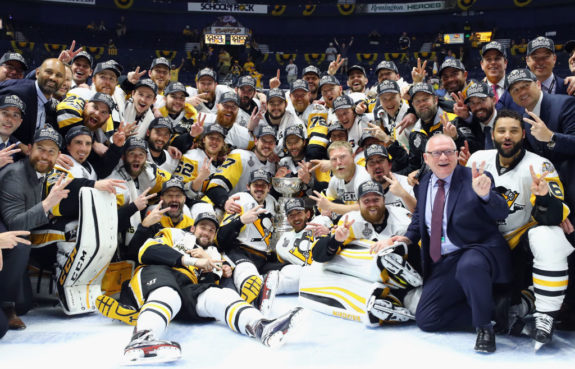
Playoff success at 5-on-5 bodes well for the Predators this season. They are the second-best team in GF% at 5-on-5, trailing only the Lightning. Even with an increase in power-play opportunities in the playoffs, the majority of play still occurs at 5-on-5 and history shows that excelling in that situation leads to more success in the postseason. There is also reason to believe in a turnaround for Nashville’s power play.
Before their Apr. 3 game against the Florida Panthers, the Predators had scored a power-play goal in back-to-back games. It was their first time accomplishing that feat since Feb. 27 when they scored in three consecutive games. Even in their game against the Panthers, they didn’t fail on the power play, they simply didn’t have any opportunities, just the third time all season that has happened to them.
*All stats came from Hockey-Reference, Natural Stat Trick, and NHL